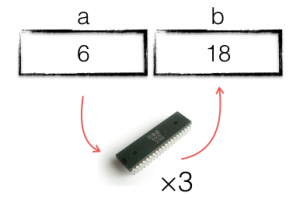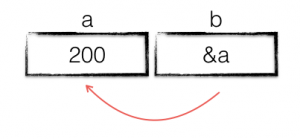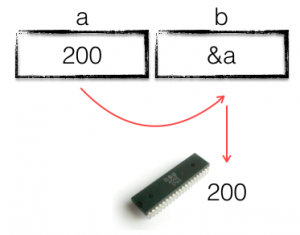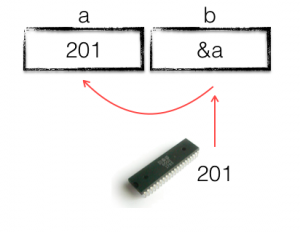In my previous post I discussed my concerns the additional complexity adding generics or immutability would bring to a future Go 2.0. As it was an opinion piece, I tried to keep it around 500 words. This post is an exploration of the most important (and possibly overlooked) point of that post.
Indeed, the addition of [generics and/or immutability] would have a knock-on effect that would profoundly alter the way error handling, collections, and concurrency are implemented.
Specifically, what I believe would be the possible knock-on effect of adding generics or immutability to the language.
Error handling
A powerful motivation for adding generic types to Go is to enable programmers to adopt a monadic error handling pattern. My concerns with this approach have little to do with the notion of the maybe monad itself. Instead I want to explore the question of how this additional form of error handling might be integrated into the stdlib, and thus the general population of Go programmers.
Right now, to understand how io.Reader works you need to know how slices work, how interfaces work, and know how nil works. If the if err != nil { return err } idiom was replaced by an option type or maybe monad, then everyone who wanted to do basic things like read input or write output would have to understand how option types or maybe monads work in addition to discussion of what templated types are, and how they are implemented in Go.
Obviously it’s not impossible to learn, but it is more complex than what we have today. Newcomers to the language would have to integrate more concepts before they could understand basic things, like reading from a file.
The next question is, would this monadic form become the single way errors are handled? It seems confusing, and gives unclear guidiance to newcomers to Go 2.0, to continue to support both the error interface model and a new monadic maybe type. Also, if some form of templated maybe type was added, would it be a built in, like error, or would it have to be imported in almost every package. Note: we’ve been here before with os.Error.
What began as the simple request to create the ability to write a templated maybe or option type has ballooned into a set of question that would affect every single Go package ever written.
Collections
Another reason to add templated types to Go is to facilitate custom collection types without the need for interface{} boxing and type assertions.
On the surface this sounds like a grand idea, especially as these types are leaking into the standard library anyway. But that leaves the question of what to do with the built in slice and map types. Should slices and maps co-exist with user defined collections, or should they be removed in favour of defining everything as a generic type?
To keep both sounds redundant and confusing, as all Go developers would have to be fluent in both and develop a sophisticated design sensibility about when and where to choose one over the other. But to remove slices and maps in favour of collection types provided by a library raises other questions.
Slicing
For example, if there is no slice type, only types like a vector or linked list, what happens to slicing? Does it go away, if so, how would that impact common operations like handling the result a call to io.Reader.Read? If slicing doesn’t go away, would that require the addition of operator overloading so that user defined collection types can implement a slice operator?
Then there are questions on how to marry the built in map type with a user defined map or set. Should user defined maps support the index and assignment operators? If so, how could a user defined map offer both the one and two return value forms of lookup without requiring polymophic dispatch based on the number of return arguments? How would those operators work in the presence of set operations which have no value, only a key?
Which types could use the delete function? Would delete need to be modified to work with types that implement some kind of Deleteable interface? The same questions apply to append, len, cap, and copy.
What about addressability? Values in the built in map type are not addressable, but should that be permitted or disallowed for user defined map types? How would that interact with operator overloading designed to make user defined maps look more like the built in map?
What sounded like a good idea on paper—make it possible for programmers to define their own efficient collection data types—has highlighted how deeply integrated the built in map and slice are and spawned not only a requirement for templated types, but operator overloading, polymorphic dispatch, and some kind of return value addressability semantics.
How could you implement a vector?
So, maybe you make the argument that now we have templated types we can do away with the built in slice and map, and replace them with a Java-esque list of collection types.
Go’s Pascal-like array type has a fixed size known at compile time. How could you implement a growable vector without resorting to unsafe hacks? I’ll leave that as an exercise to the reader. But I put it to you that if you cannot implement simple templated vector type with the memory safety we enjoy today with slices, then that is a very strong design smell.
Iteration
I’ll admit that the inability to use the for ... range statement over my own types was something that frustrated me for a long time when I came to Go, as I was accustomed to the flexibility of the iterator types in the Java collections library.
But iterating over in-memory data structures is boring—what you really want to be able to do is compose iterators over database results and network requests. In short, data from outside your process—and when data is outside your process, retrieving it might fail. In that case you have a choice, does your Iterable interface return a value, a value and an error, or perhaps you go down the option type route. Each would require a new form of range loop semantic sugar in an area which already contains its share of footguns.
You can see that adding the ability to write template collection types sounds great on paper, but in practice it would perpetuate a situation where the built in collection types live on in addition to their user defined counterparts. Each would have their strengths and weaknesses, and a Go developer would have to become proficient in both. This is something that Go developers just don’t have to think about today as slices and maps are practically ubiquitous.
Immutability
Russ wrote at the start of the year that a story for reference immutability was an important area of exploration for the future of Go. Having surveyed hundreds of Go packages and found few which are written with an understanding of the problem of data races—let alone actually tried running their tests under the race detector—it is tempting to agree with Russ that the ‘after the fact’ model of checking for races at run time has some problems.
On balance, after thinking about the problems of integrating templated types into Go, I think if I had to choose between generics and immutability, I’d choose the latter.
But the ability to mark a function parameter as const is insufficient, because while it restricts the receiver from mutating the value, it does not prohibit the caller from doing so, which is the majority of the data races I see in Go programs today. Perhaps what Go needs is not immutability, but ownership semantics.
While the Rust ownership model is undoubtedly correct—iff your program complies, it has no data races—nobody can argue that the ownership model is simple or easy for newcomers. Nor would adding an extra dimension of immutability to every variable declaration in Go be simple as it would force every user of the language to write their programs from the most pessimistic standpoint of assuming every variable will be shared and will be mutated concurrently.
In conclusion
These are some of the knock on effects that I see of adding generics or immutability to Go. To be clear, I’m not saying that it should not be done, in fact in my previous post I argued the opposite.
What I want to make clear is adding generics or immutability has nothing to do with the syntax of those features, little to do with their underlying implementation, and everything to do with the impact on the overall complexity budget of the language and its libraries, that these features would unlock.
David Symonds argued years ago that there would be no benefit in adding generics to Go if they were not used heavily in the stdlib. The question, and concern, I have is; would the result be more complex than what we have today with our quaint built in slice, map, and error types?
I think it is worth keeping in mind the guiding principals of the language—simplicity and readability. The design of Go does not follow the accretive model of C++ or Java The goal is not to reinvent those languages, minus the semicolons.






